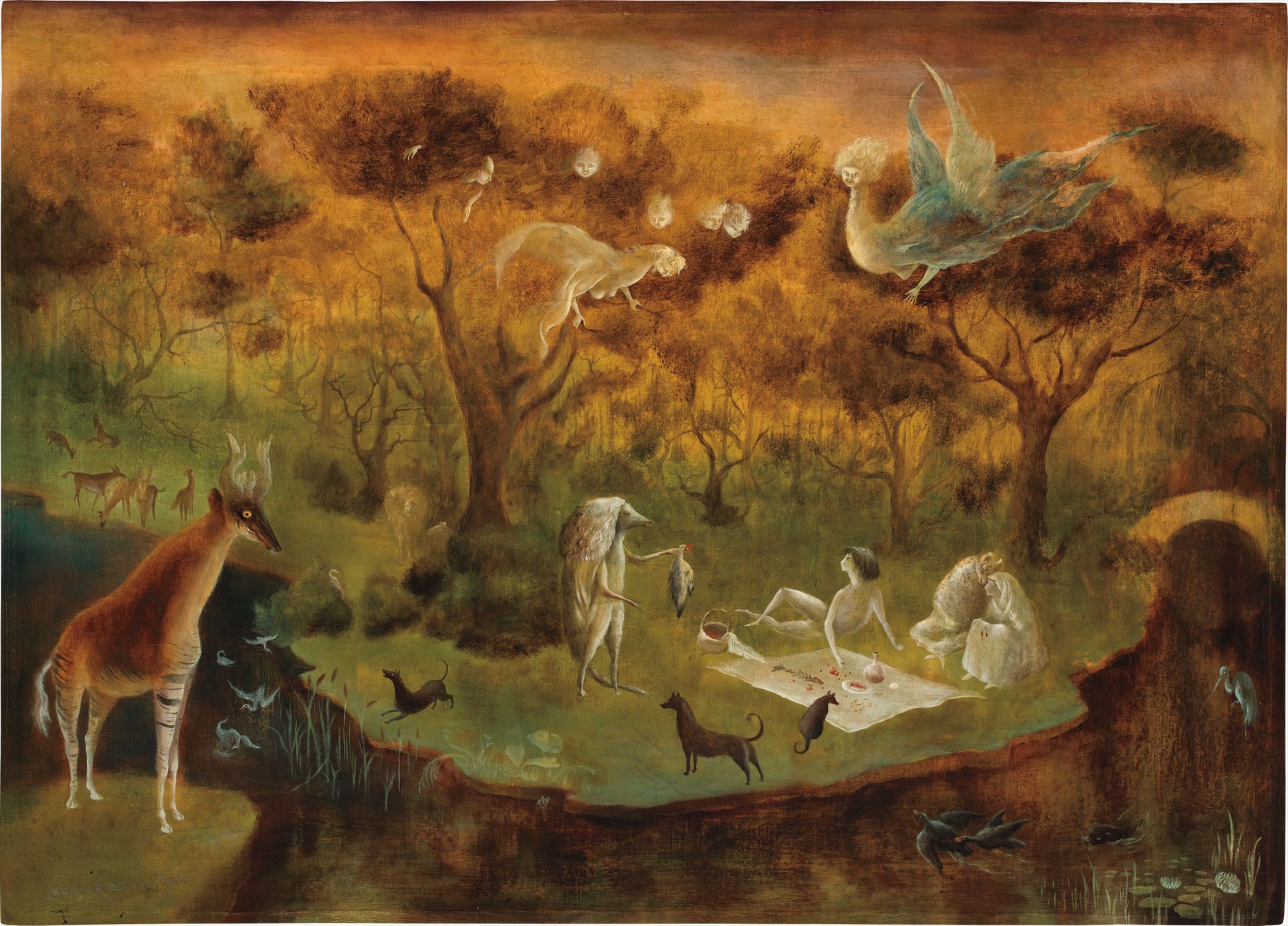

20
Leonora Carrington
Pastoral
Full-Cataloguing
Surrealism had preceded Carrington in Mexico, gaining visibility with the International Surrealist Exhibition, organized by Breton in 1940, and continuing to develop in the close-knit émigré community that welcomed her into its fold. She gravitated toward the circle around the poet Benjamin Péret, which included the photographer Kati Horna, the photojournalist Emerico “Chiki” Weisz, whom she married in 1946, and the painter Remedios Varo, a kindred spirit who became her confidante and co-adventurer into the world of the occult. Together, she and Varo explored painting as an alchemical practice, merging Mexico’s ritual traditions and history—the Popol Vuh, pre-Hispanic archaeology, herbs and foodstuffs sourced from local markets—with a host of divinatory arts, from Tarot and astrology to the I Ching and the Cabbala. Carrington returned to the public eye in the late 1940s with a breakthrough solo exhibition at Pierre Matisse Gallery in New York (1948); her acclaimed debut in Mexico followed two years later at Clardecor, a design showroom, and she soon had the instrumental backing of Inés Amor at the Galería de Arte Mexicano, which championed her work for decades to come.
Carrington made animal studies at the zoo in Tuxtla Gutiérrez, in Chiapas, as she once had in London, and her drawings likely engendered the menagerie of magical beasts that grace the enchanted, twilit garden of Pastoral. From myriad water fowl to a stately giraffe and the spotted hyena that bends the ear of the seated figure, the animals convene amiably around the gossamer-white couple, creating an Arcadian mise-en-scène in the forest clearing. “I think animals have everything—maybe a bit more than we have,” Carrington considered, “but I believe that human beings are animals. I don’t think we make a decision, like animals. We both live the best we can and then we die, and we don’t know anything about what happens after death, maybe nothing. We are in the same situation as animals. Animals sometimes have certain faculties that we don’t normally have, such as a kind of telepathy.” With its hybrid figures and playful animism, Pastoral evokes the allegorical landscapes of the Northern Renaissance, epitomized by the lurid debauchery of Bosch’s Garden of Earthly Delights (1490-1500). Yet Carrington’s garden party spurns moralizing satire in favor of a more serendipitous congregation, graced by celestial bodies hovering in the treetops and an ethereal figure, part bird and part woman, flying through the air. “In everybody,” Carrington mused, “there is an inner bestiary.”
Abigail McEwen, PhD
Leonora Carrington
British / Mexican | B. 1917 D. 2011At the core of Leonora Carrington's Surrealist oeuvre is a preoccupation with gender and feminist issues. Born to a wealthy family in Lancashire, England, Carrington demonstrated an interest in art at a young age and enrolled at Chelsea School of Art in London. Carrington first became interested in Surrealism after having attended the 1939 International Surrealist Exhibition, and later entered into a relationship with German Surrealist painter Max Ernst.
Like many European intellectuals and artists, Carrington fled war-torn Europe and settled in Mexico where she was greatly influenced by the cultural and religious syncretism. Carrington's unique Surrealist aesthetic is one that often features females as the central figure and includes fairytale-like imagery.